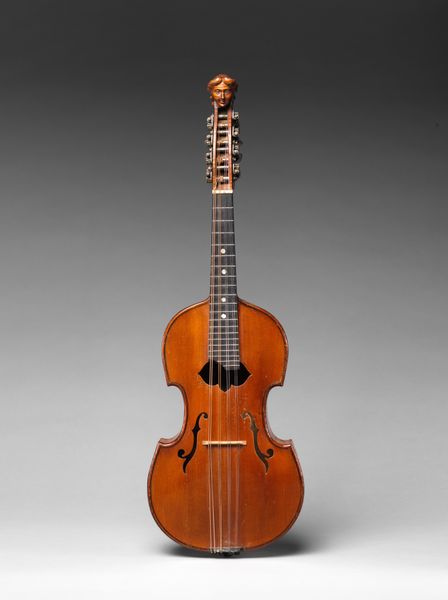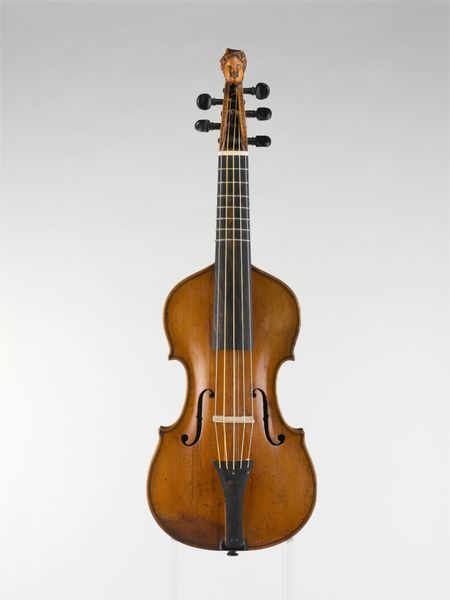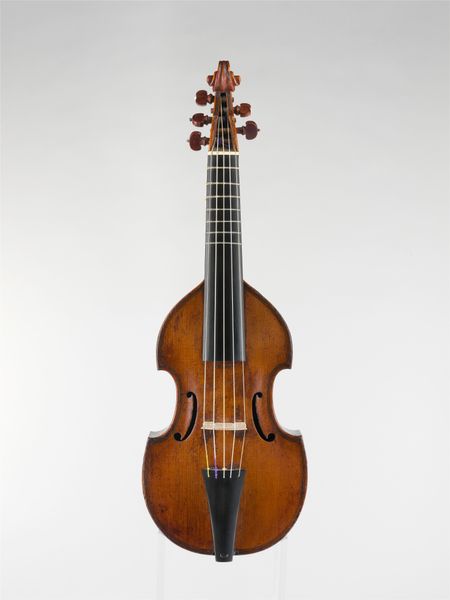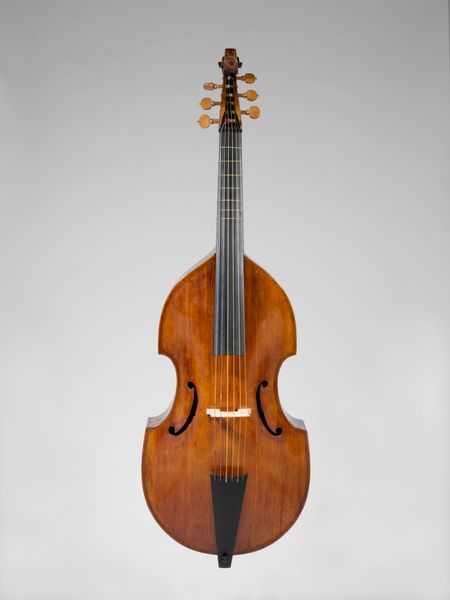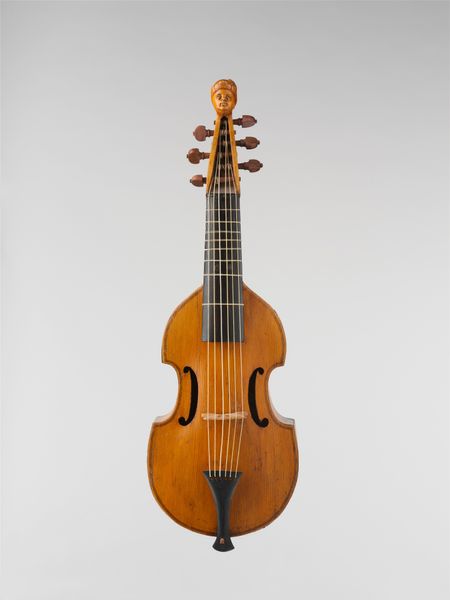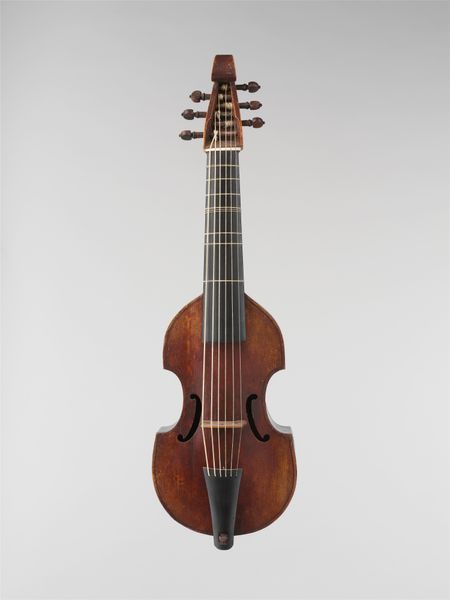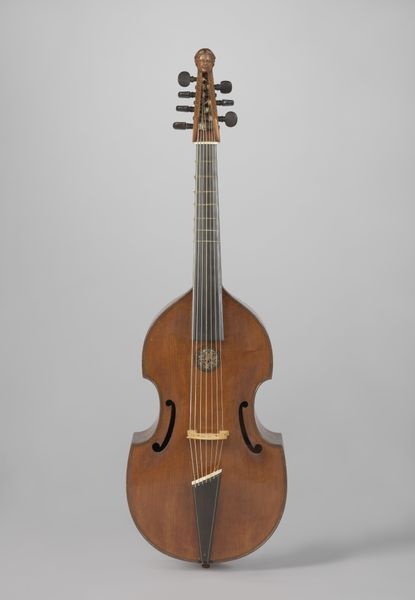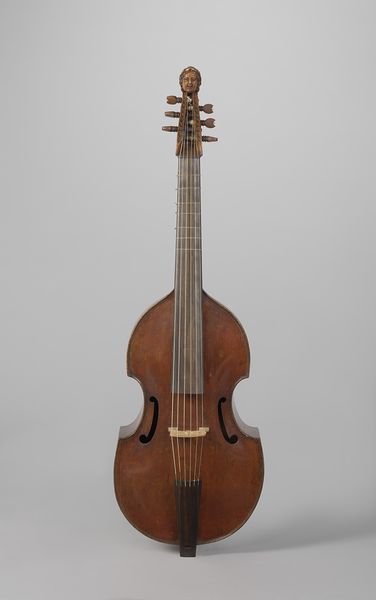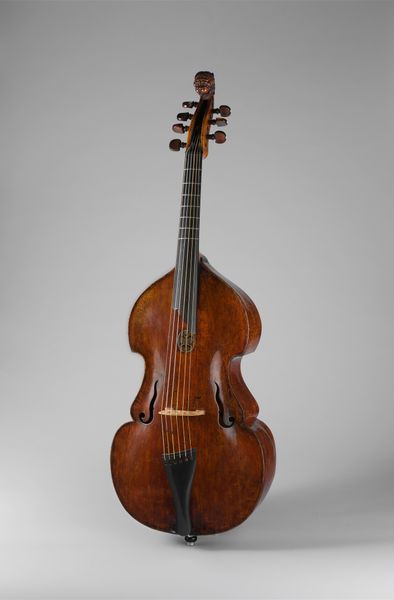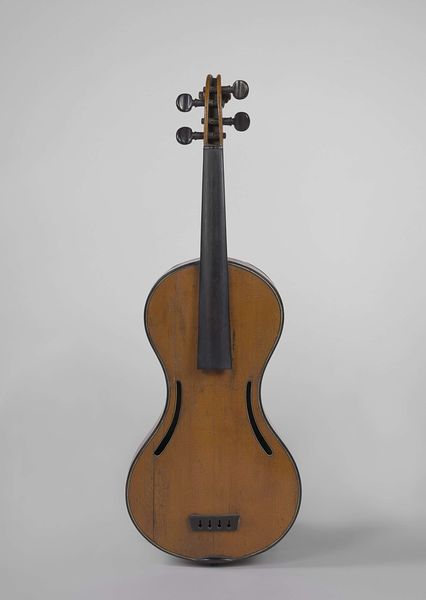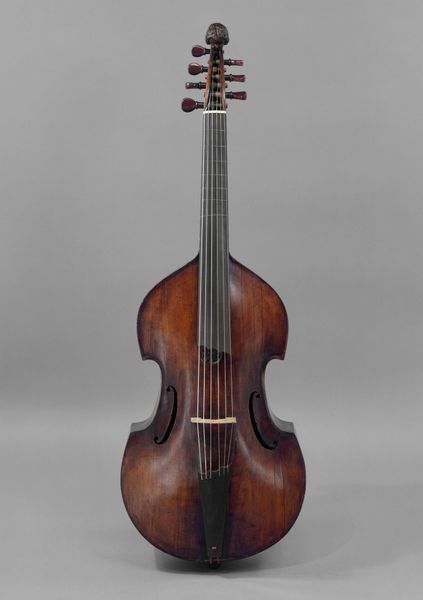
sculpture, wood
#
portrait
#
sculpture
#
romanticism
#
wood
#
musical-instrument
Dimensions: Total L.: 115.7 cm (45-9/16 in.); Body L.: 68.2 cm (26-5/8 in.); Widths: UB. 33.3 cm (13-1/8 in.): MB. 23.2 cm (9-1/8 in); LB. 39.5 (15½ in.); Sto. 34.2 (13-3/8 in); String L. 60.4 (23½); For other measurements see department file.
Copyright: Public Domain
Editor: Here we have Johann Georg Staufer’s "Arpeggione" from 1831, residing here at the Met. It's crafted from wood, and it appears to be some kind of cello relative... The smoothness of the wood and the symmetry of the piece is striking. What compositional elements stand out to you? Curator: Primarily, I am drawn to its construction: Observe the six strings as opposed to the more familiar four, requiring a wider fingerboard and altered playing technique. And note the relationship between the curves of the body, how they resolve to create a unified, visually harmonic form. Does that harmony evoke Romantic ideals? Editor: Absolutely! There's a certain longing communicated just in the form itself. But what do you make of the star detail at the headstock? Curator: It introduces an element of geometric contrast amid the organic curves. Perhaps a symbol of aspiration or transcendence, disrupting the otherwise smooth flow and adding visual complexity to the object. Does its placement strike you as significant? Editor: It’s definitely focal, and it contrasts nicely with the dark wood. It's clear Staufer paid close attention to both visual and tactile details, to build the image, not just the instrument itself. Curator: Precisely. Each choice impacts the overall aesthetic. By attending to the nuances of line, shape, and material, the luthier shapes our perception of not just sound but artistic expression. The totality produces this feeling of romanticism. Editor: I appreciate your point about the unified form! Now, I have a much richer understanding of how intentional Staufer was with its structure and style. Curator: Indeed, seeing how parts create wholeness is the real education here.
Comments
No comments
Be the first to comment and join the conversation on the ultimate creative platform.
